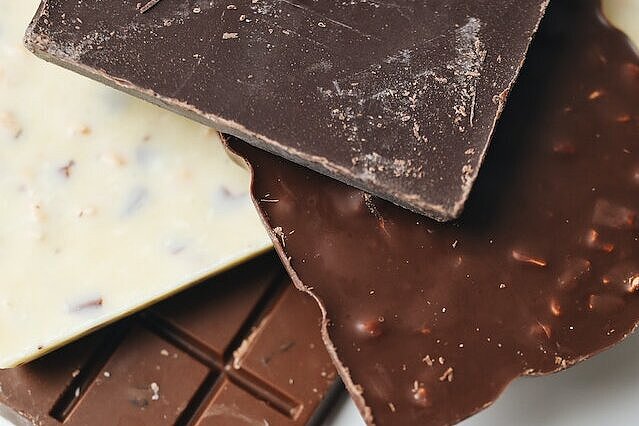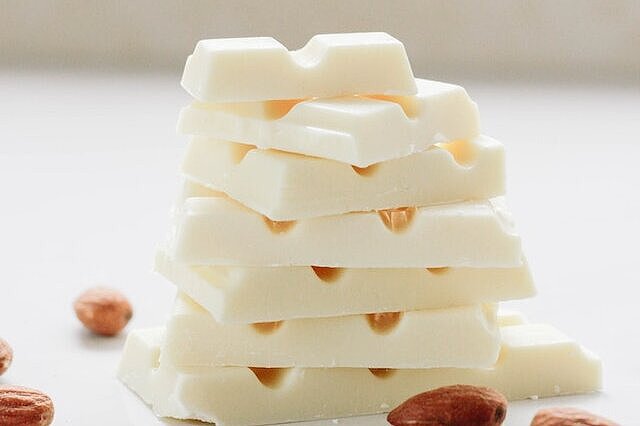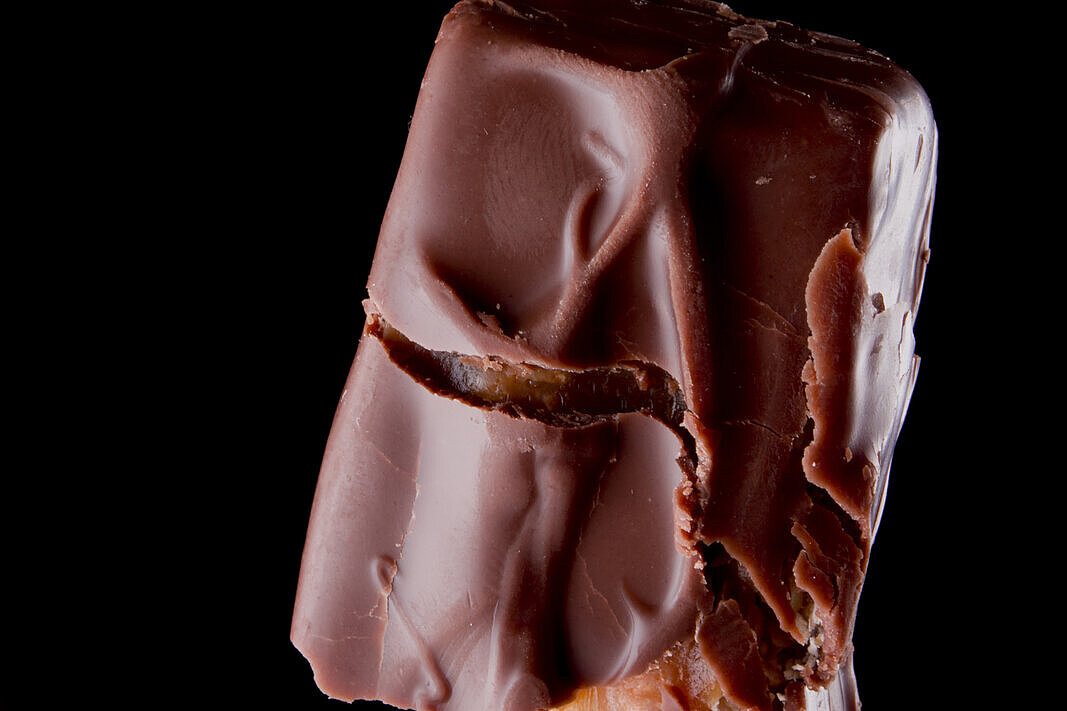Milk chocolate

What is milk chocolate?
Milk chocolate is a chocolate product made from cocoa products (cocoa, cocoa butter), types of sugar and milk or milk products. Other names are milk chocolate or alpine milk chocolate. Milk chocolate is more sensitive to heat and has a shorter shelf life than dark chocolate. It should be stored in a cool, dry place at around 18 degrees.
Milk chocolate has a lower cocoa content than dark chocolate, but a higher sugar content. The minimum total cocoa solids content is 25 percent, the minimum milk solids content is 14 percent and the minimum total fat content is 25 percent. Milk chocolate can also contain nuts, fruit or other ingredients.
Why is milk chocolate harmful to dogs?
The main reason why milk chocolate is dangerous for dogs is the cocoa it contains. Cocoa contains theobromine, a substance that has a stimulating effect on humans but is toxic to dogs. Theobromine can cause heart palpitations, convulsions, vomiting, diarrhea and even death in dogs.
The amount of theobromine in chocolate depends on the cocoa content. The darker the chocolate, the more theobromine it contains. Milk chocolate has less theobromine than dark chocolate, but still enough to poison a dog. The lethal dose of theobromine for a dog is around 100 to 200 milligrams per kilogram of body weight. This means that just 50 to 100 grams of milk chocolate can be fatal for a small dog.
In addition to the cocoa, the high sugar content in milk chocolate can also be problematic for dogs. Too much sugar can lead to obesity, diabetes and tooth decay. Sugar can also impair the absorption of nutrients in the intestines and lead to digestive disorders.
How can I protect my dog from poisoning?
The best way to prevent chocolate poisoning in dogs is not to give them chocolate or make it accessible to them. Always keep your chocolate out of your dog's reach and make sure they don't find any leftover chocolate wrappers or crumbs.
If you suspect that your dog has eaten chocolate, you should see a vet immediately. The quicker treatment is given, the better the chances of recovery. The vet can try to induce vomiting or give your dog activated charcoal to bind the theobromine and excrete it.
Milk chocolate may be delicious for us humans, but it is a dangerous poison for dogs. That's why you should never feed or reward your dog with chocolate. There are many other healthy and safe treats for your four-legged friend.
Properties 3
Are you looking for other ingredients with a specific property?
Just click on them to find more.
If you notice any signs of hypersensitivity or poisoning in your dog, you should see your vet immediately. We are not a substitute for a vet, but we try to be as accurate as possible. Every dog reacts differently and we recommend you get a second opinion or consult your vet if in doubt.
Stay healthy and take good care of your four-legged friend!😊
Similar to Milk chocolate
Chocolate is made from the seeds of the cocoa tree. These contain a substance called theobromine, which is an alkaloid. Theobromine has a stimulating and mood-enhancing effect on people, similar to...
Dark chocolate is a type of chocolate that contains a high proportion of cocoa mass and little or no sugar. It is often referred to as dark chocolate or bittersweet chocolate and has an intense...
White chocolate is made from cocoa butter, which is pressed from the cocoa mass. The cocoa mass is the product obtained from the roasted and ground cocoa beans. Cocoa butter is the fat from the...
Chocolate bars are a form of chocolate that is combined with various ingredients in a handy bar shape. The ingredients vary depending on the brand and flavor, but some typical examples are Cookie...



